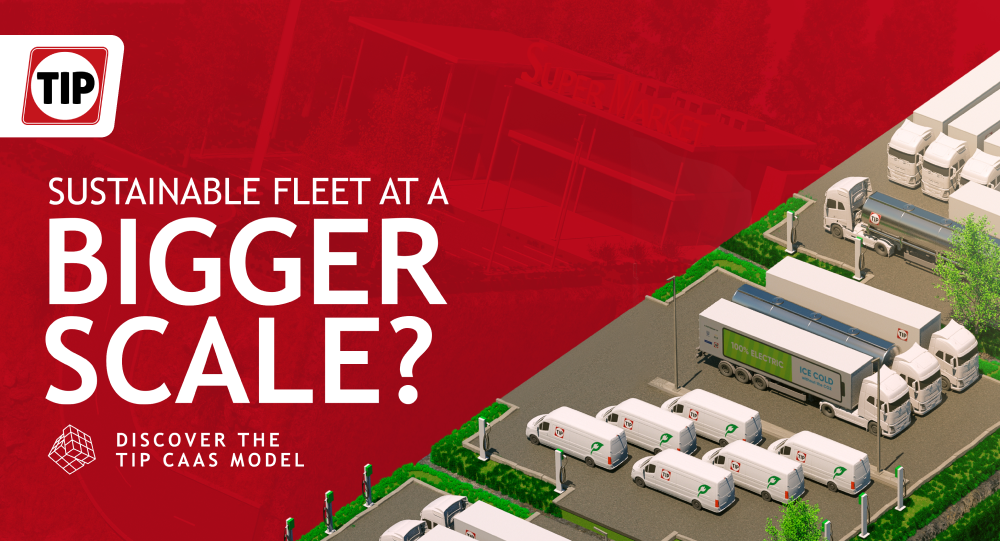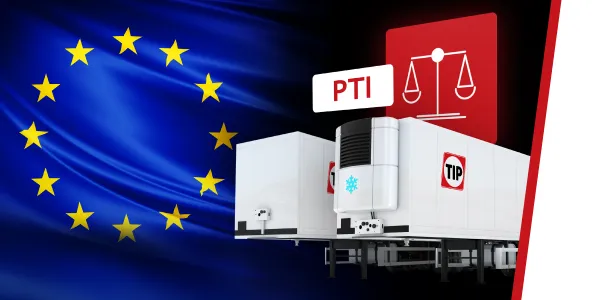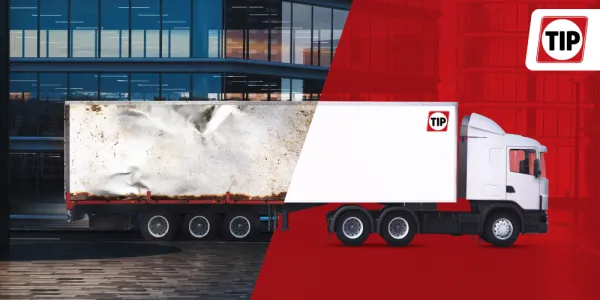CaaS model offers significant benefits for transport companies
Invest in equipment and reduce the CO2 footprint of your transport company? Our Carrier as a Subcontractor (CaaS) model reduces the risk and improves the financing conditions for carriers looking to upgrade their equipment. In this article, we share the key benefits of the CaaS model for carriers and how it will help you gain a competitive advantage.
“Our CaaS model offers attractive financing conditions for transport companies looking to invest in making their fleet more sustainable. In addition, we have reduced the risk associated with this investment; under certain conditions the transport company can return the equipment without early termination penalties. With this model, we have made it easier for both carriers and shippers to reduce their CO2 footprint and unlock new opportunities.” – Rogier Laan, Vice President Global Sales & Marketing at TIP Group.

What is the Carrier as a Subcontractor (CaaS) model?
Large companies looking to distribute their goods are what we at TIP Group call shippers. Most of their transportation is performed by so-called carriers, transport companies. Generally, shippers and carriers enter into contracts of about 2 years before agreements are reviewed, while capital investment in transportation equipment has an investment horizon of at least 9 years. This makes it unlikely that a carrier will upgrade their equipment – e.g. exchange diesel-powered refrigeration for more sustainable electric equipment – based on a 2-year contract.
Working closely with shippers and carriers, TIP Group developed the Carrier as a Subcontractor (CaaS) model to solve this problem. TIP Group now offers carriers selected by the shipper the opportunity to invest in their equipment at interesting financial conditions while, at the same time, reducing the risk of such investments. If the carrier contract is terminated by the shipper, for whatever reason, the transport company is free to return the equipment without incurring early termination penalties.
Our CaaS whitepaper shares the origin story of the CaaS model and a detailed explanation of the market forces that make it such a timely opportunity for the transport sector.
Benefits for carriers
The carriers get significant benefits from participation in the CaaS model:
-
No capital investment required
-
Reduce CO2 footprint
-
Equal or better operating cost
-
No risk
-
Increase carriers’ competitive advantage
No need for capital investment
Since the CaaS model is based on leasing, the carrier is not required to make a capital investment. This opens up the opportunity for many more transport companies.
Reduce CO2 footprint
Through the CaaS model, carriers have the opportunity to significantly reduce their CO2 footprint and further distinguish themselves from the competition by investing in their fleet to make it more sustainable. On top of that, the CaaS model can work wonders for electric vehicles, including electric reefers and trucks, paving the way for a greener future by significantly trimming their carbon footprint.
Equal or better operating cost
Operating cost is, of course, a key factor to determine if the CaaS model fits a company. In the CaaS model, we mostly talk about total cost of usage (TCU) to determine how much a carrier benefits. We have found that the CaaS model makes a lot of sense for carriers from a TCU standpoint and one of our specialists can help you develop that financial model.
No risk
The carrier has no risk. If the contract with the shipper is not extended, the carrier can return the equipment to TIP without any early termination penalties. This allows carriers to take the leap while being protected from any downside.
Increase carriers’ competitive advantage
The CaaS model allows carriers to better distinguish themselves from their competition. They are able to tailor their equipment to the wishes of shippers and thus increase their chances of winning contracts.
Discover how the CaaS model can benefit your organization
Talk to one of our specialists to discover the financial benefits for your company and calculate the CO2 reduction you can achieve with the CaaS model. Together we will build a financial model based on a Total Cost of Usage (TCU) analyse that we can subsequently challenge. This conversation aims to identify the optimal solution that aligns with your company's needs and long-term aspirations.
For more information about our CaaS model and how it would apply to your company, contact your regular TIP contact person, or click here to contact our team of service specialists.












